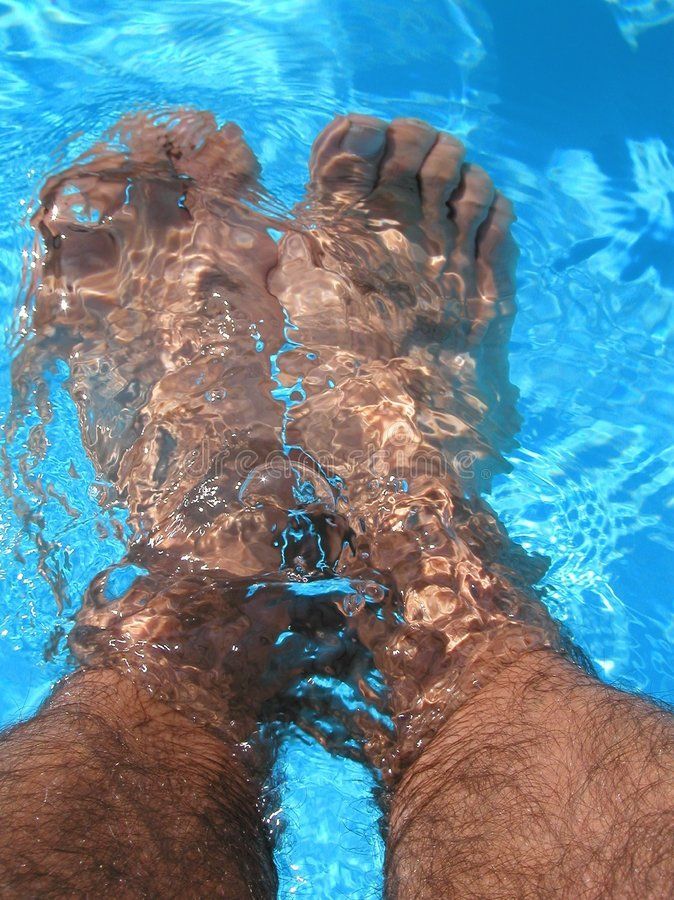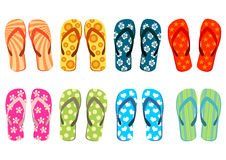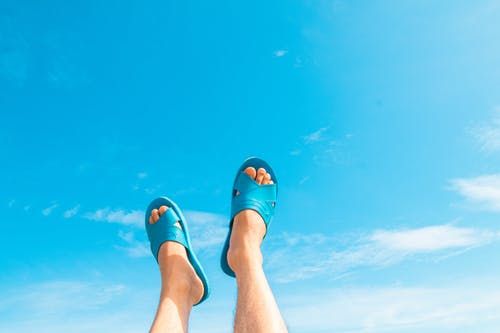The heatwave season is upon us!
June 23, 2020
How to Keep Your Feet Cool in a Heatwave

We’re enjoying another UK heatwave! While feet often feel a bit uncomfortable during the summer, some people find that intense heat make any feet related problems almost unbearable.
So let’s consider why heatwaves can be a nightmare for feet and how best to cool yours down.
Feet Struggle in Soaring Summer Temperatures
When temperatures soar, the feet’s quarter of a million sweat glands go into overdrive. They’re trying to make the skin cooler but more often than not leave it really damp and less than fragrant. Heatwaves are also notorious for making feet swell up. When blood vessels dilate to help heat escape, fluid floods the tissues. If people stand or sit for long periods, gravity encourages large amounts of that fluid to collect in the feet, making them feel tired and achy.
Sweaty, swollen feet aren’t just unpleasant – they also increase your risk of foot health issues, such as blisters, foot odour and athlete’s foot fungal infections (fungi thrive in moist conditions). That’s why knowing how to take care of your feet in a heatwave can be invaluable.
Simple, Effective Ways to Cool Feet Down
If your feet are feeling sorry for themselves at the end of a long, hot day, don’t worry. There are plenty of practical steps you can take to cool them down. All you’ll need are some readily available household items.
•
Turn your hot water bottle into a foot cooler by half-filling it with cold water then adding a little crushed ice. It’s the ideal size to rest your feet on and feels wonderful!
•
Place a cold, damp bath towel over your feet for a cooling, soothing sensation.
•
Take advantage of reinvigorating evening breezes by sitting outside, uncovering your feet and elevating them on a footstool. They’ll soon be cooler and less swollen.
•
Spritz your feet with a foot spray containing refreshing peppermint essential oil, which cools, soothes and revives hot, tired feet.
•
Keep a washing-up bowl filled with cool water by your sofa or bed and enjoy a foot soak in the evening or if you wake up feeling uncomfortable overnight. To make the experience even more relaxing, add a few drops of lavender or tea tree oil to the water.
Top Tips for Keeping Feet Fresh and Comfortable
There are also several ways to reduce the chances of feet overheating or feeling awful on scorching summer days. Follow these tips and you should find that your feet are more comfortable overall.
•
There are complete nail and foot sanitisers, which help with infections caused by fungus and bacteria. The foot sanitiser when sprayed on the feet and in the shoe will prevent the spread of infection to the rest of the feet and nails which could potentially cause athletes foot. Clear-Zal
is a good example of the complete foot and nail sanitiser.
•
Wash and dry your feet thoroughly in the morning and again at night to remove sweat and odour-causing bacteria.
•
Spray antiperspirant over your feet to discourage excessive sweating.
•
If you need to wear socks, look for ones that have a ‘wicking’ action, drawing sweat away from the skin. They’ve long been favoured by runners.
•
Choose footwear made of leather – it’s supremely breathable and comfortable.
Expert Care for Sweaty, Swollen Feet at the Kettering Foot Health Clinic
The foot fatigue people suffer from when heatwaves strike can usually be remedied by following the kind of straightforward advice outlined above. However, if your feet sweat or swell up severely and persistently, it’s worth visiting us. For healthy feet this summer and beyond, please call 01536 485381

Flip flops are an easy choice for around the house, garden or pool and if you’ve been enjoying the sunshine in a pair of flip flops, you may now notice some pain in your feet, ankles and lower legs, possibly drier skin than usual on your toes and heels, and even maybe some discoloured toenails or verrucae. Here’s why flip flops aren’t necessarily the best choice for your feet during summer. What’s the Problem with Flip Flops? Wearing flip flops for long periods of time or for walking distances can cause a variety of different problems. 1. Lack of Support Many styles of flip flops have flat soles with little or no padding and no contouring to fit the shape of the sole of your foot, which means a lack of heel cushioning and arch support. This lack of support can lead to foot pain along the sole of your foot – plantar fasciitis – or tendinitis, and even pain in the knees and hips from the lack of shock absorption. 2. Exposure to Germs While wearing flip flops is better than wearing no shoes in public areas like swimming pools and changing rooms when it comes to avoiding contagions like verrucae, they don’t shield your feet from germs and infections that might be lurking in public places. Substances like soil or grit, which would usually be kept off your feet by enclosed shoes or more substantial soles, can work their way into cuts or grazes or under your toenails, which are perfect spots to spread infection. 3. Unnatural Gait Due to a lack of fastenings or ankle straps to keep your flip flops in place, your feet have to adopt an unnatural grip-like tension to keep your flip flops from, well, flopping off! Walking in flip flops for long periods can result in severe pain in the shins and calves of your legs and along the top and bottom of your feet. Flip flops should be avoided for children of all ages, as they can cause permanent damage. In the short-term they can cause blisters, rubbing, bruising and calluses, but in the long term it could affect foot development. 4. Risk of Injury Thanks to the lack of cover provided by flip flops, you’re leaving your feet exposed to a higher risk of injury, such as cuts from sharp edges or surfaces, stubbing your toe or injury through dropping heavy objects directly onto your foot. They can also make you more prone to tripping or twisting, injuring your ankles and feet. This can be even more of a risk to your overall health if you suffer with diabetes. 5. Sun Damage, Dry Skin and Cracked Heels When your bare feet are exposed to the elements and are unsupported, dry skin and cracked heels are inevitable. You may also experience sunburn and peeling skin on the tops of your feet if you don’t apply sunscreen effectively. A study has found that feet are a common area to forget to apply sunscreen but can feel the full impact of the sun’s rays, making it a dangerous mistake to make. Here at the Kettering Foot Health Clinic we want you to enjoy healthy feet all year round. If your feet are feeling a bit sore or if you are suffering with a foot issue such as toenail infection or hard skin, call us on 01536 485 381 . We’ll treat the problem and give you advice and support to keep your feet in tip-top condition.

The sun is shining and temperatures are high: two clear indications that sandal season is here! Across the country people are kicking off their covered-in shoes and slipping on snazzy summer footwear instead. The problem is that many sandals, particularly those with flimsy fastenings or hazardous high heels, are shortcuts to foot complaints and injuries. To avoid blisters, strains, pain and a host of other issues, you need sandals that’ll protect, not punish, your feet. With that in mind, we’ve put together a guide to foot care for sandal season, full of essential advice. Choosing the Best Sandals for Your Feet When shopping for foot-friendly sandals, it’s advisable to visit a reputable shoe shop, where you can have your feet properly measured and footwear properly fitted. You’re also more likely to find sandals there that offer the following key features. Leather Uppers Because they’re breathable and malleable, leather sandals will keep your feet cool while also feeling extremely comfortable. By contrast, synthetic materials can make your feet sweat excessively, leading to foot odour, irritation and sores. Adjustable Straps The ability to adjust straps is invaluable – without it, your sandals may dig in when your feet swell up on humid days. Another tip is to look for straps that are at least half an inch wide; narrower ones are likely to feel like cheese wire cutting into your feet when worn for prolonged periods. Ouch! Secure Fastenings Sturdy buckles or Velcro will help to hold your feet in place and contribute to a snug fit. Slip-ons should be avoided; otherwise your toes will claw at the insoles in a desperate attempt to stop your sandals falling off. Strong Arch Support Dense foam in the midsole can protect the plantar fascia – a thick band of tissue that runs across the bottom of your foot and connects your heel bone to your toes. Plenty of arch support is essential to guard against the agony of plantar fasciitis.. Strong Heel Support Look for covered-in backs or sturdy straps around the heel area. You don’t want your heels sliding around – that’ll only make you vulnerable to injury, as well as creating excess friction, which leads to blisters and dry, cracked skin. Padded, Flexible Soles Well-cushioned, flexible sandals provide superior shock absorption. The ‘slap-slap’ sound some sandals make when you walk around in them is a sign that the soles are too flat, thin and rigid to protect your feet against the impact of striking the ground. Low Heels Sandals with heels that are less than a couple of inches high will help to ensure that your feet and ankles remain stable. Don’t be tempted to totter about in stiletto heels or wedges. Comfortable Doesn’t Mean Unfashionable It’s important to point out that prioritising foot health no longer means losing out in the style stakes. As Vogue magazine has emphasised in the past in its summer sandals guide, today’s trendsetters are ‘not buying anything that will potentially gnaw at the feet’. Instead they’re opting for sandals that combine comfort with aesthetic appeal and a well-concealed orthopaedic sole. So, you can be both fashion-conscious and kind to your feet. VIONIC sandals are one example of supportive and sexy sandals. You can get them from www.simplyfeet.co.uk If you quote code XQ9V7168 you will get an extra 10% discount. Looking After Your Feet When Wearing Sandals There are several practical steps you can take to make the transition from shoes to sandals as smooth as possible. • Break in new sandals by wearing them with socks indoors before venturing outside. • Rub sun cream all over your feet to protect them against sunburn. • Apply an anti-chafing gel to reduce friction, especially if you’ll be walking long distances. • Leave your sandals to dry out thoroughly in a well-ventilated area at the end of each day to stop them getting smelly. You can ensure that your feet are in tip-top condition before you put them on show by visiting the Kettering Foot Health Clinic . We have the expertise to make calluses, cracked heels, fungal nail infections and other frustrating foot problems a thing of the past. For specialist foot care throughout sandal season and beyond, please call us on 01536 485 381 .

At this time of year, you’re probably ready for a bit of sunshine and summer fun. But after months of wearing thick socks and shoes your feet may not be summer-ready, and putting them on show can be a daunting thought. It’s easy for your footcare regime to fall to one side over the winter, when your feet are mostly hidden under socks, boots and slippers. Now is the time for some summer preparation. If you don’t have any underlying health issues, conditioning your feet can be simple. Here are five easy steps you can take at home to get your feet back into tip-top, summer-ready condition. 1. Soak Giving your feet a 10-20 minute soak in warm water can be both relaxing and beneficial, softening any hard, dry skin that may have built up on your toes and heels over the winter. This practice will help boost circulation, hydrate skin and soothe the muscles in your feet and lower legs after long periods of walking or standing. 2. Exfoliate Epsom Salts, a natural exfoliant comprising of magnesium and sulphates, can be added to your footbath for mild cases of dry skin or cracking. Use a pumice stone or foot file to rub away any areas of hard skin; it can work miracles on stubborn patches of dry skin and cracked heels, which, according to a 2012 study sponsored by the Institute of Preventative Foot Health, around 20% of adults suffer from. Make sure not to over-do it though – this shouldn’t be painful. Like anything, be gentle and stop if any redness occurs. 3. Moisturise The skin on our feet has to naturally be tougher than the rest of our bodies, so it’s only right that you should treat your feet to a specific foot cream. Often, foot creams contain ingredients such as urea, which are particularly good at targeting dry, cracked skin. If your feet need an extra surge of moisture, apply a thick layer of a good foot cream last thing before bed and wear a pair of socks to contain the cream so it doesn’t make a mess on your sheets. 4. Toenail Care Ingrown toe nails and fungal nail infections can be unsightly and are a main cause for concern as sandal season approaches. After showering, make sure your toenails are thoroughly dried and, now it’s getting warmer, try to go barefoot at home to let them air naturally. Cutting your nails straight across and not too short will help prevent ingrown toenails too. 5. Sun Care Finally, when the sun does make an appearance, make sure your SPF protection goes all the way to the ends of your toes – not forgetting the soles of your feet either. The skin on your feet is just as sensitive to sunburn as the rest of you, so make sure you’re covered! Sunburned feet really hurt! While these ideas will help your feet to look summer ready, it’s always a good idea to visit a chiropodist to give your feet a thorough MOT and make sure they’re looking – and feeling – their very best for summer. The Kettering Foot Health Clinic offers a range of chiropody services at our clinic. Call 01536 485 381 today to make an appointment and make sure your feet are ready for the summer
Re-opening Tuesday 26th May 2020 We hope you, your family and friends remain safe and well. We would like to take this opportunity to thank all of you who have been so supportive. We are pleased to confirm that we will be re-opening from Tuesday 26th May for a limited number of patients. Initially we will be only be open 1 day a week, so every Tuesday, until social distancing conditions relax further. We are able to offer some limited appointments to specific patients according to the government guidance on self-isolation. The safety, security and well-being of our practitioners and patients are paramount. We want you to feel comfortable and safe, so we have introduced numerous protective measures as: staggered appointments, decontamination breaks between appointments, patients must wear masks and payments to be taken only by contactless card transactions. To make an appointment you must call the Clinic on 01536 485 381 and leave your name and number. You will be contacted individually so that we can confirm you are meeting the criteria that are set out by the guidelines. You must not come to to the Clinic until you have spoken to Helen, otherwise you will not be seen. Unfortunately at present, a number of patients will not yet be able to be seen, but hopefully, this will change soon and we are taking every possible step to ensure our patients have maximum peace of mind and are treated safely. As a general rule, please do not come if you do have any Covid19 symptoms (or been in contact with Covid-19 patients over the last 14 days), and try to avoid public transport when visiting us. If you would like to contact us please : Phone - 01536 485 381 Email - info@ketteringfoothealth.co.uk We look forward to welcoming you back. Helen Venn-Brown
New paragraph

